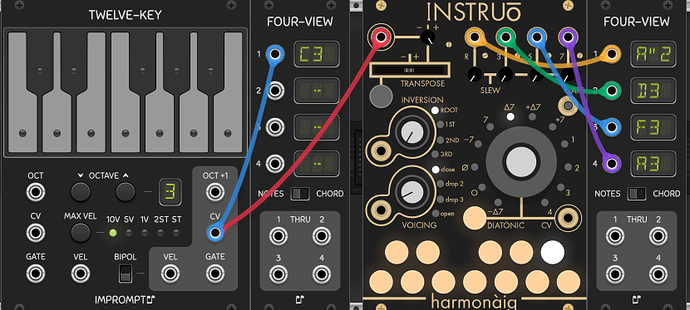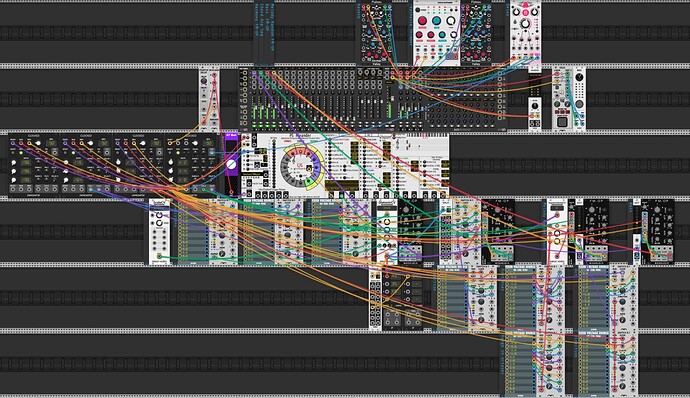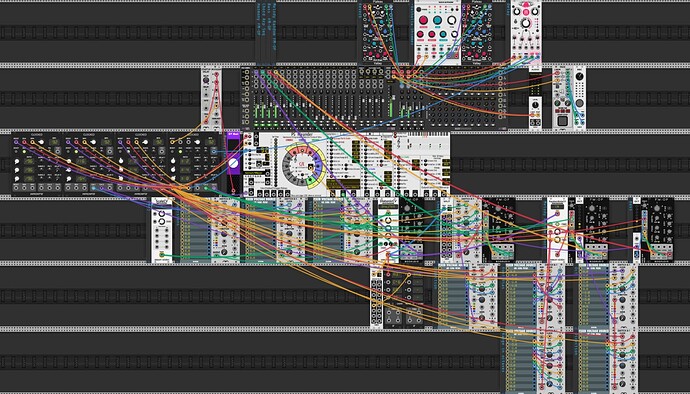I would like to propose a standard for CV in and out of diatonic harmonic (chord) and scale degrees. As a reminder, diatonic harmonic degrees are represented by Roman numerals I-VII and diatonic scale degrees by Arabic numbers 1-7 typically as 3rd, 5th, 7th for example.
I would like to propose the standard of 1.0v for I, 2.0v for II up to 7.0v for VII with the same scheme for scale degree intervals such as 3.0v for 3rds up to 7.0v for 7ths, for example.
Which modules support harmonic degree CVs? I’m only aware of my Meander module and Aaron Static’s DiatonicCV module. Does anyone know of any others?
Unfortunately, Meander uses 1.0-7.0v for harmonic degrees and DiatonicCV uses 0.0-6.0v for the same.
Meander has always accepted diatonic harmonic degree CV input allowing an external module to sequence Meander harmonic progressions in a way that works the same for every mode and root scale. Meander V2.0.24 which I am testing now adds harmonic degree CV out that can feed other modules that understand harmonic degrees, such as Meander and DiatonicCV. Unfortunately, I had to add an options menu section to select either 1-7v or 0-6v format in order for Meander to be able to harmonically sequence both Meander and DiatonicCV. That is done and works fine, but it would be simpler for the future if everyone would use the 1-7v standards so that the degree number matches the voltage.
This may sound like a minor new capability for Meander, but it enables Meander to use any of its 80 harmonic progression presets or custom progressions to sequence DiatonicCV. DiatonicCV is a wonderful module that supports several different chord types, inversions and voicings.Sadly, Aaron Static has not been active here in almost a year, so I don’t know what they have planned for the future. Once I have submitted the new version of Meander to the library, I will post an example of Meander sending to DiatonicCV and with several Aaron Static modules being CV sequenced for parametric control. I think the results sound amazing.


